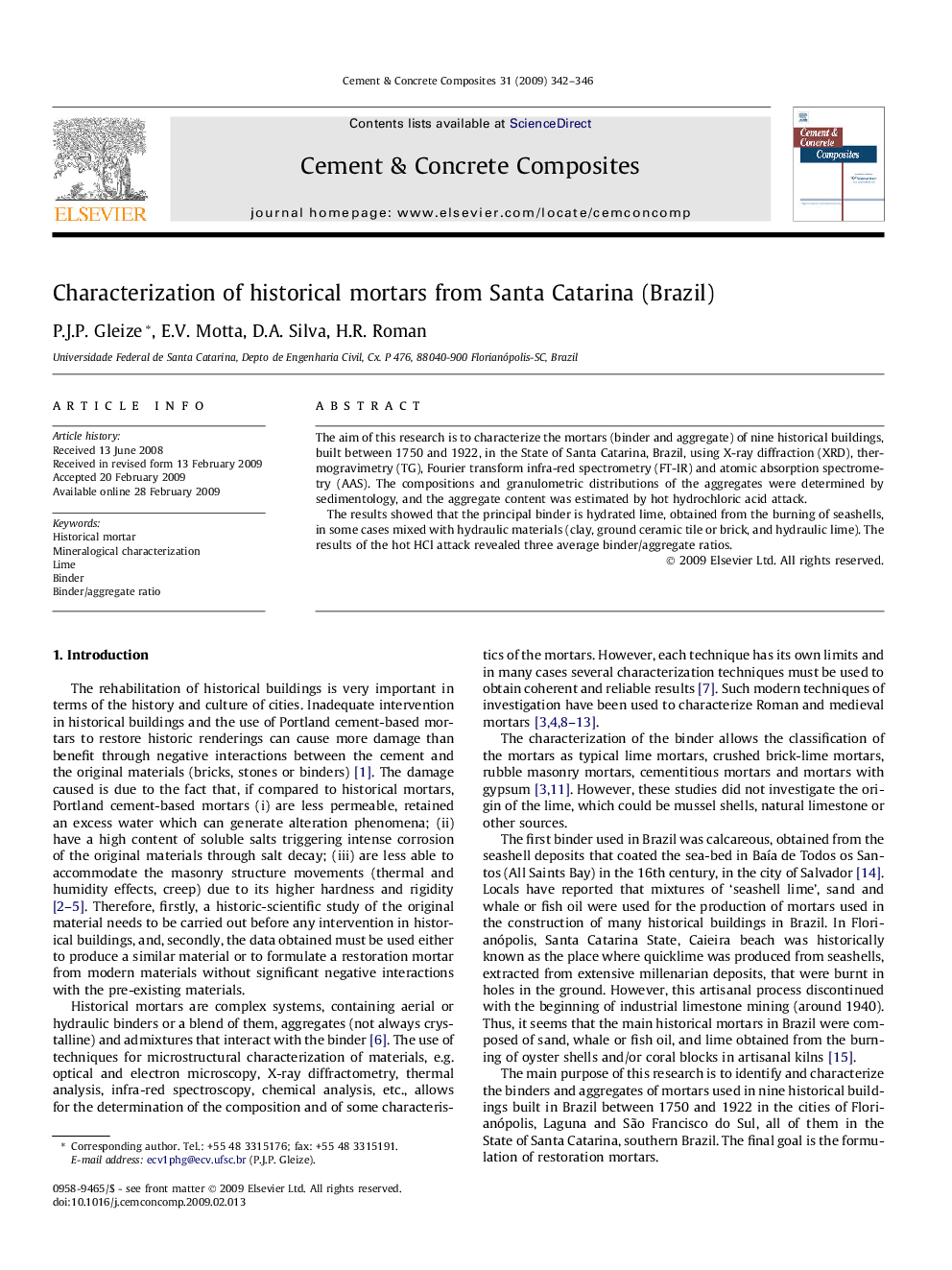| Article ID | Journal | Published Year | Pages | File Type |
|---|---|---|---|---|
| 1455382 | Cement and Concrete Composites | 2009 | 5 Pages |
The aim of this research is to characterize the mortars (binder and aggregate) of nine historical buildings, built between 1750 and 1922, in the State of Santa Catarina, Brazil, using X-ray diffraction (XRD), thermogravimetry (TG), Fourier transform infra-red spectrometry (FT-IR) and atomic absorption spectrometry (AAS). The compositions and granulometric distributions of the aggregates were determined by sedimentology, and the aggregate content was estimated by hot hydrochloric acid attack.The results showed that the principal binder is hydrated lime, obtained from the burning of seashells, in some cases mixed with hydraulic materials (clay, ground ceramic tile or brick, and hydraulic lime). The results of the hot HCl attack revealed three average binder/aggregate ratios.
